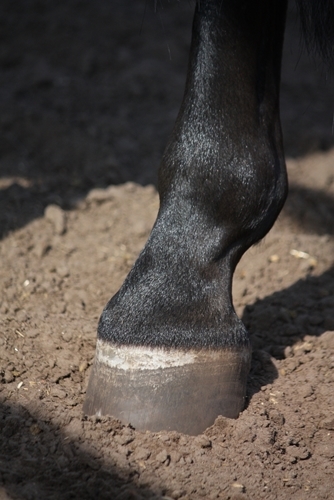In many ways, hooves are the most important element to a horse’s performance. There’s a lot of weight being carried upon the hooves, and many instances of lameness point to some type of hoof complication. However, there’s more that goes into diagnosing hoof complications than soreness or bruises here and there. There are a variety of ailments that may occur around your horse’s feet that can decrease its performance or overall mobility. Here are some of the more common causes of hoof complications, as well as how to properly treat these experiences:
Bruises
More often than not, hindered mobility can be traced back to a bruised hoof. Bruises can stem from just about anything, whether it be your horse stepping on a rock or trotting along rough terrain. Often referred to as stone bruises, these marks often appear in darker red colors in white hoofs or in darker grey spots in black hoofs, right along the sole of the foot. While bruises can clearly be visible while inspecting the heel and hoof area of the horse, sometimes horses will begin limiting their mobility before the bruise can even be seen. One of the first things you can do if you’re concerned about bruising along the hoof is immerse the foot in a bucket of cold water. This can work to prevent blood rushing to the hoof from building up and creating more bruising. To keep bruises from reoccurring, try to inspect your horse’s feet for any lodged rocks or debris that may be stuck within the hooves.
Cracking
Checking your horse’s hooves for cracks is always an essential component to treating foot complications. Cracks, dents and scars within the horse’s hooves can appear through a variety of ways, and while some cases can be no cause for alarm, cracks can occasionally be severe. They can be tricky to detect, because cracking can begin inside the hoof, which means it isn’t visible. Heavy pressure experienced on the coronary band or a combination of weak hoof walls and hard surfaces are the primary causes for cracking, and the condition is quite common among racehorses, who are constantly putting pressure on their hooves. Hoof cracks typically require farrier intervention. In severe cases, repairing cracks requires screws or acrylic to fill in gaps, and special, customized shoeing might be necessary for the future.
Abscess
Another primary reason for abrupt lameness in your horse is an abscess, which arises when bacteria has infected your horse’s hoof. As the bacteria spreads around the hoof, the horse’s foot will become more sensitive, and not treating signs of abscess right away could result in excessive swelling or bruising. The progression of infection is usually from a puncture in the horse’s hoof, and the hole leaves the foot susceptible to spreading bacteria. The Horse Channel recommends that the first thing you’ll want to do to address abscess is immediately attempting to disinfect the entire hoof. If a veterinarian has confirmed that there is an infection present, begin soaking your horse’s hoof in a warm bucket of water that’s been mixed with Epsom salts. Leave the hoof in there for around 10 minutes, which should be plenty of time to not only disinfect the foot, but help drain the abscess. Keep the hoof bandaged for the next week or two, and consult with your veterinarian if anti-inflammatory medications are also necessary.
Quick-relief
For any of these conditions, don’t hesitate to attend to your horse’s hoof complications with some healthy and safe products. Easypack™ can be applied to your horse’s hooves whenever you suspect that there might be a minor hoof problem. With its soothing ingredients ranging from lemon balm oil to glycerine to myrrh oils, Easypack™ can help promote healthy hooves for your horse. Remember, ignoring indications of impaired mobility or hoof complications will only make treating these predicaments more complicated in the long run.









